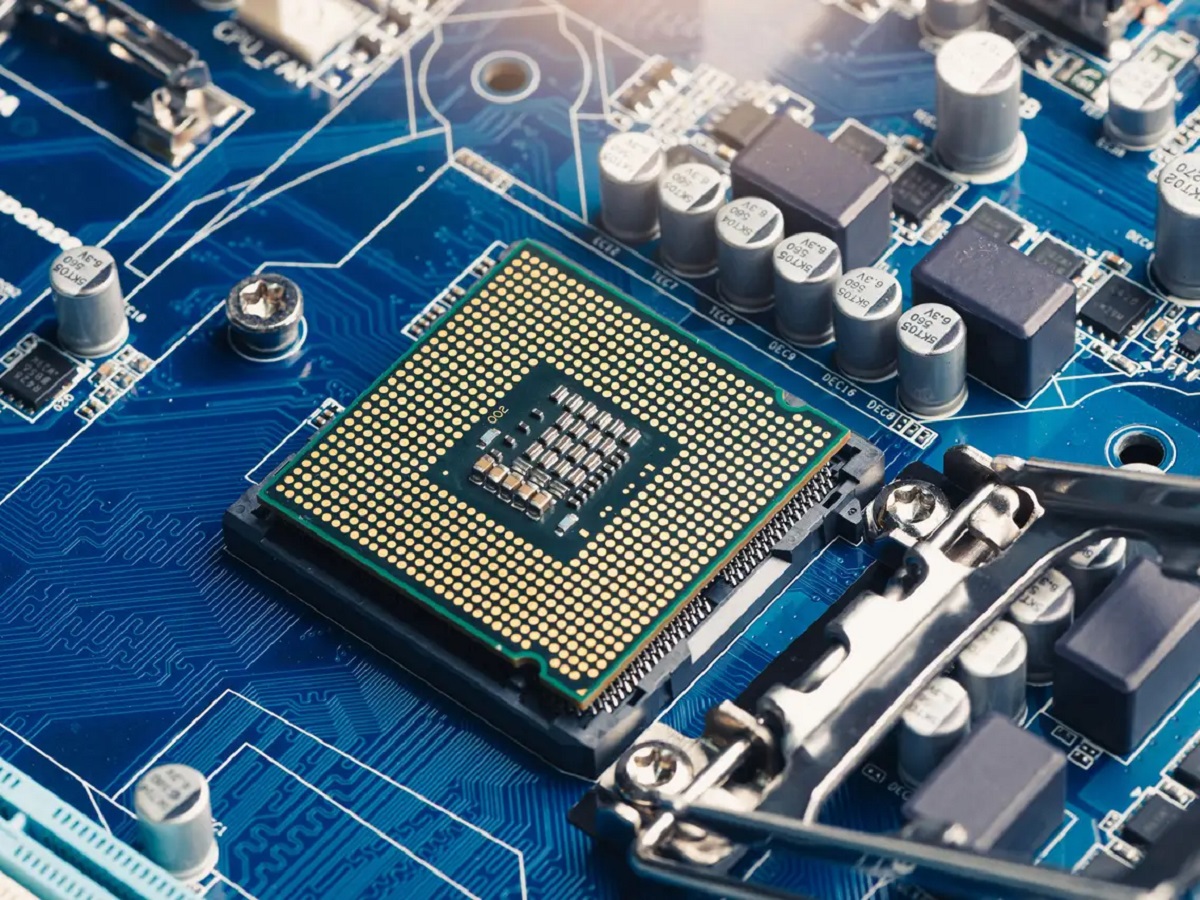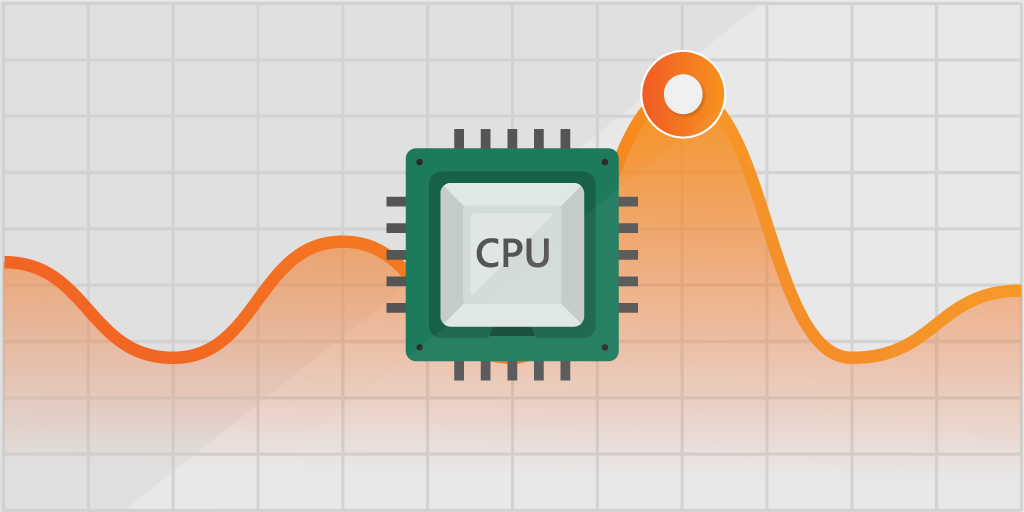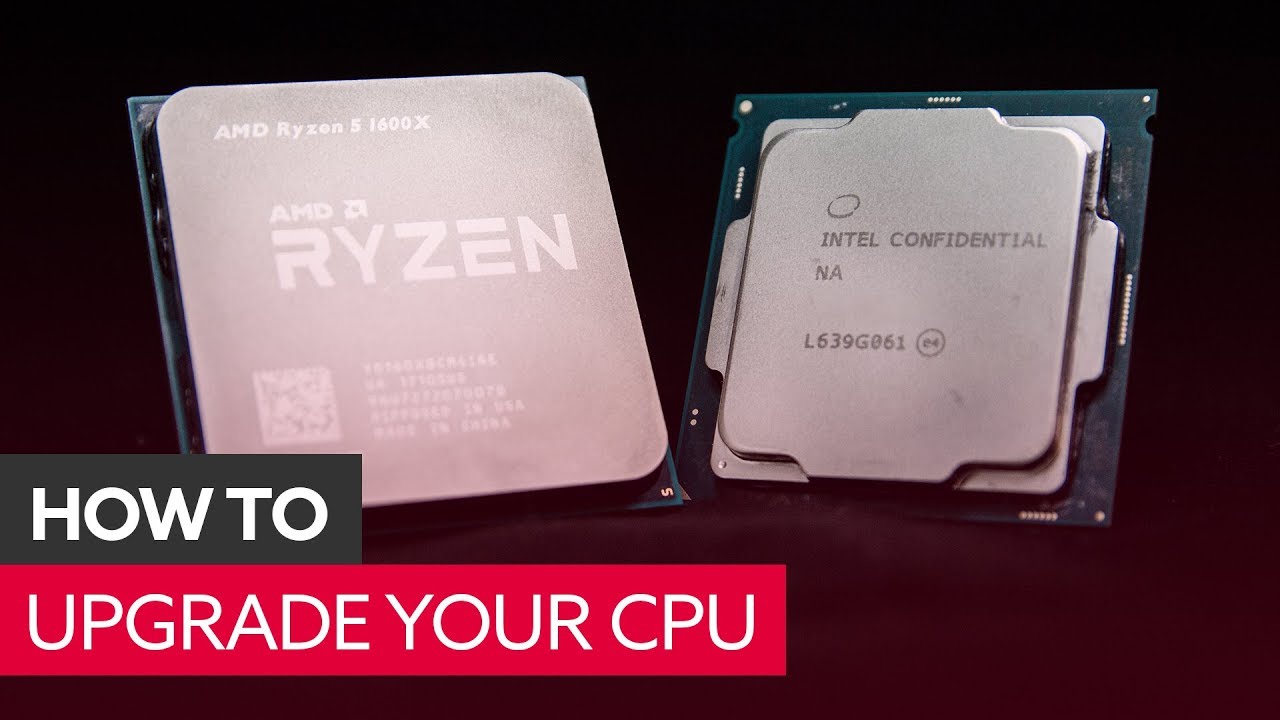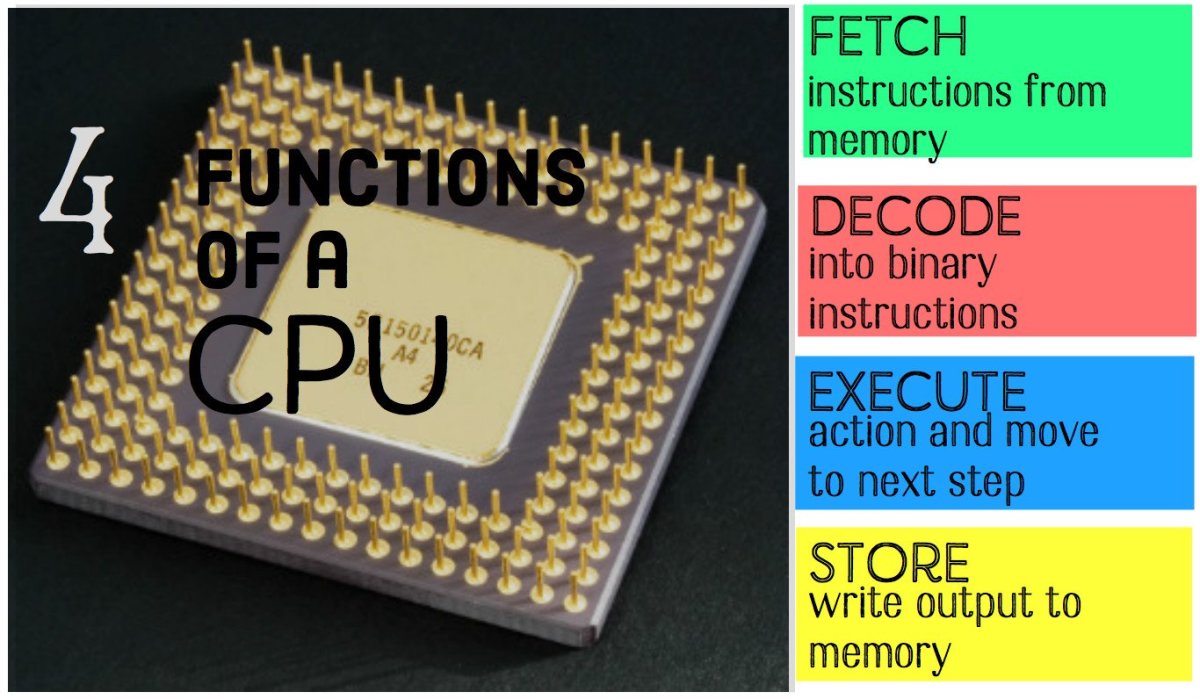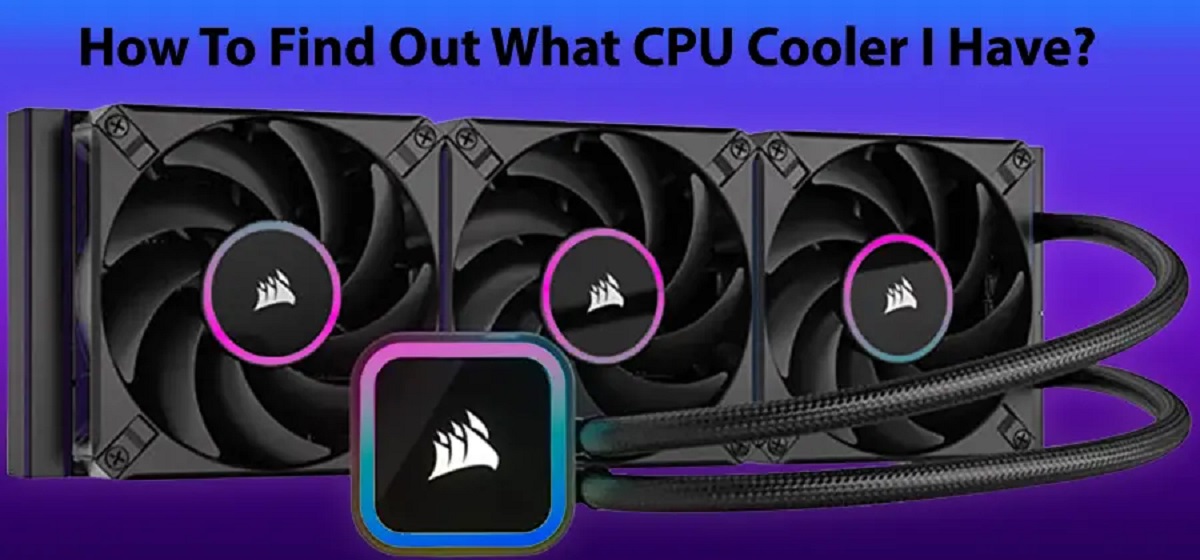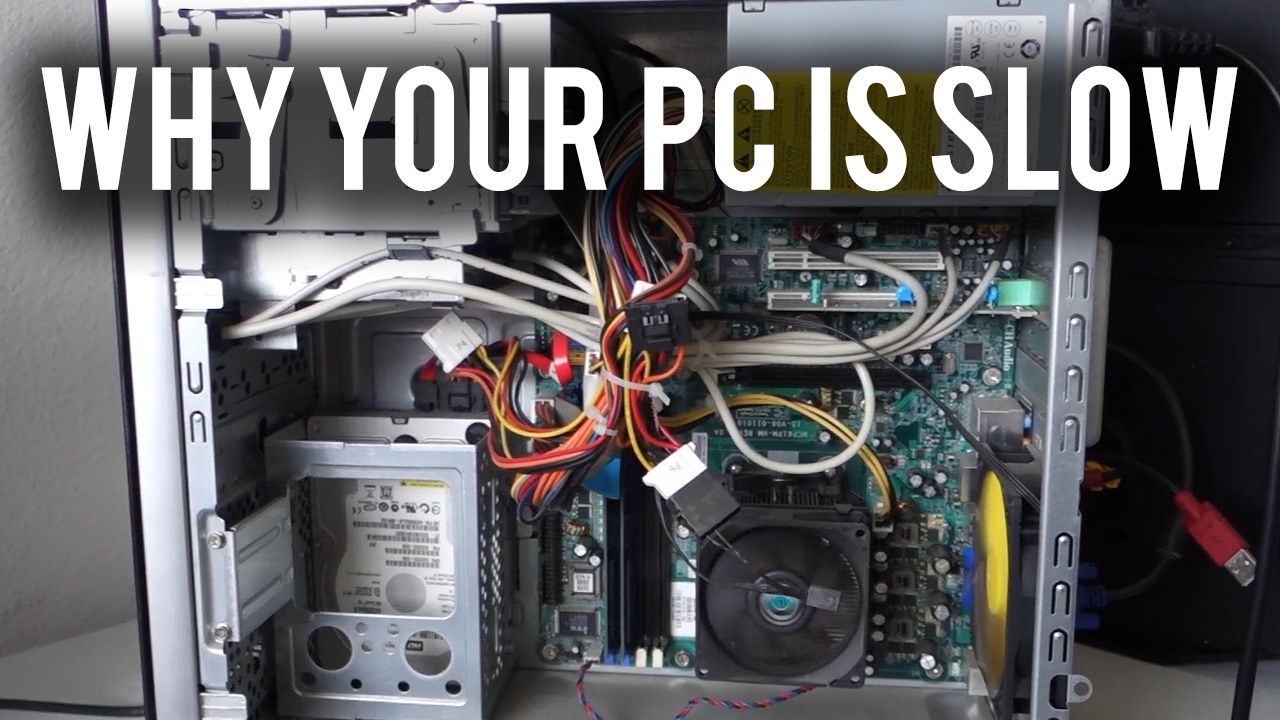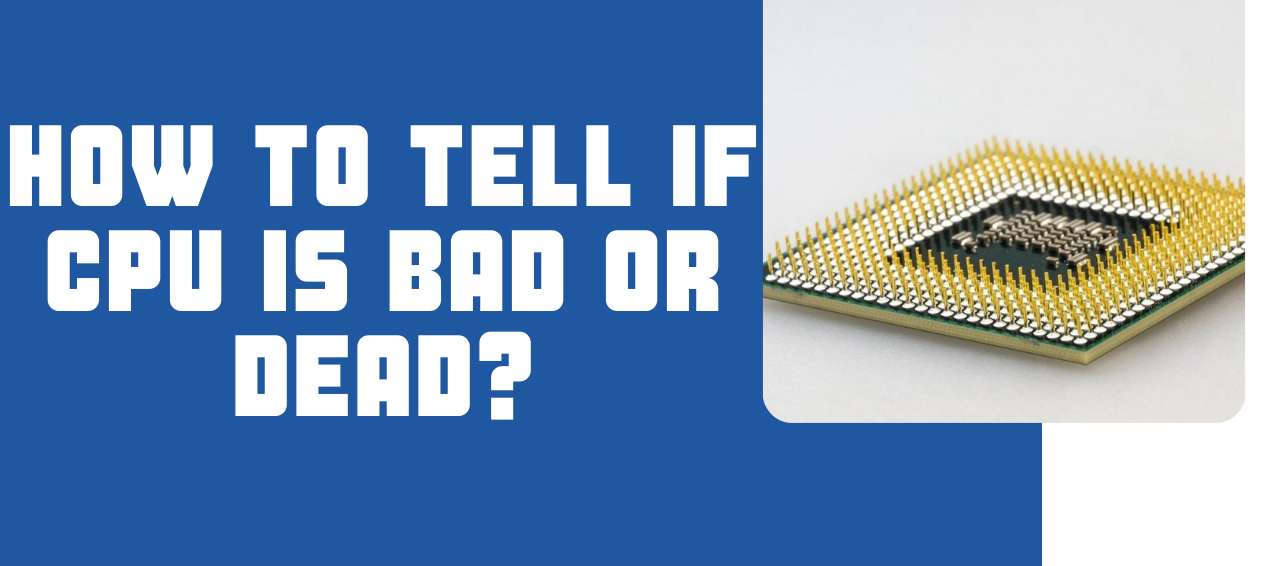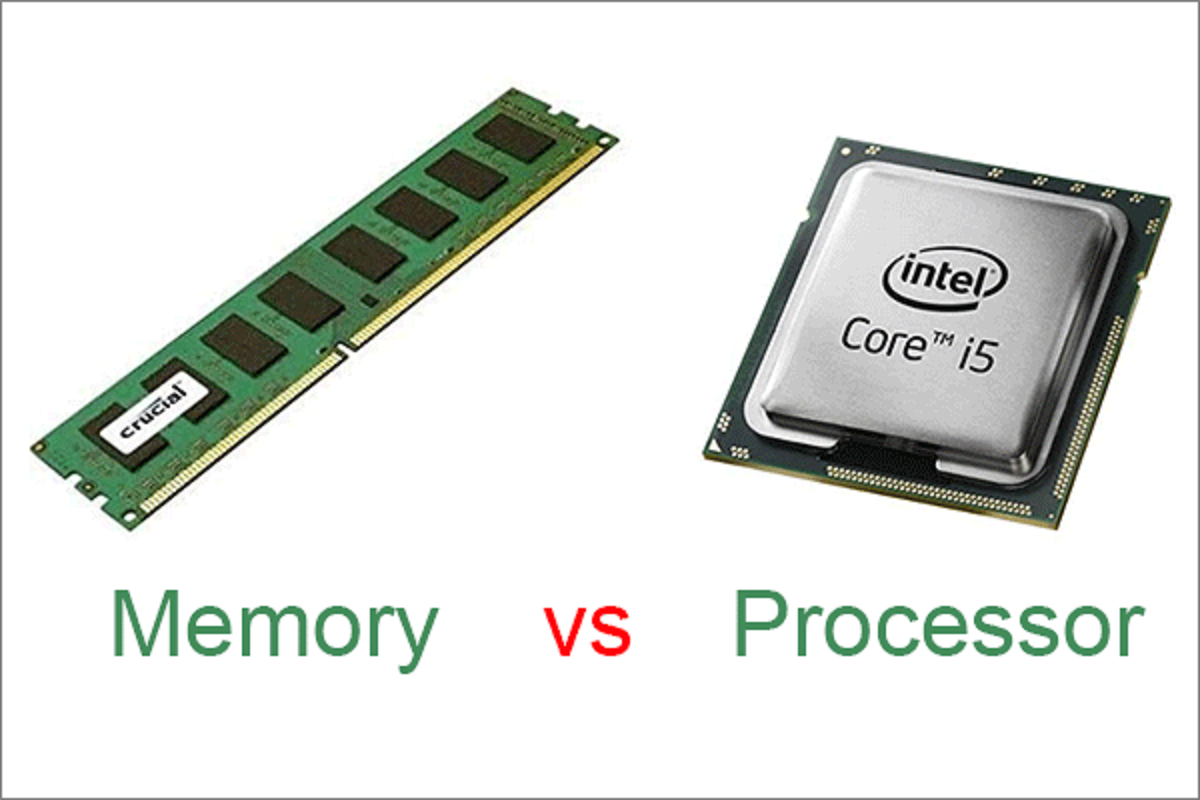What Is A CPU In A Computer
The Central Processing Unit (CPU) is often referred to as the “brain” of a computer. It is a vital component that performs most of the calculations and processes the instructions necessary for a computer to function effectively. The CPU is responsible for executing all the tasks required by the operating system and applications running on the computer.
At its core, the CPU is composed of electronic circuits that carry out the logical and arithmetic operations required to process data. It acts as the bridge between the computer’s hardware and software, converting instructions from software programs into electrical signals that the hardware components can execute.
One of the key functions of the CPU is to control and coordinate the various components of the computer system. It manages the flow of data between different parts of the computer, including the memory, storage devices, input/output devices, and peripherals. It ensures that data is processed accurately and efficiently by allocating resources and prioritizing tasks based on their importance and urgency.
The CPU also plays a crucial role in determining the overall performance of a computer system. It is responsible for executing instructions and carrying out calculations at high speeds, measured in gigahertz (GHz). A faster CPU can handle more tasks simultaneously, resulting in improved multitasking capabilities and faster response times.
Modern CPUs are typically multi-core, meaning they contain multiple processing units within a single chip. This allows for parallel processing, where multiple tasks can be executed simultaneously, further enhancing the computer’s performance. Each core within the CPU has its own cache memory, which stores frequently accessed data to speed up processing.
In summary, the CPU is the central processing unit of a computer and is responsible for executing instructions, handling data, and coordinating the various components of the system. It determines the speed and performance of the computer and plays a vital role in ensuring smooth operation. Without a CPU, a computer would be unable to function as we know it.
Importance of CPU in a Computer System
The CPU is an essential component in any computer system and holds significant importance for its overall performance and functionality. It serves as the primary processing unit and performs various critical tasks that enable the computer to function effectively. Understanding the importance of the CPU can help us appreciate its role in powering our everyday computing needs.
First and foremost, the CPU is responsible for executing all the instructions and calculations necessary to run software programs. From launching applications to editing documents and playing games, the CPU handles the processing power required to perform these tasks. The speed and efficiency of the CPU significantly impact the user experience, determining how quickly and smoothly programs will run.
Furthermore, the CPU plays a crucial role in multitasking. As users, we often have multiple applications and processes running simultaneously, such as web browsing, email, and media playback. The CPU divides its processing power among these tasks, ensuring each one receives the required resources to run seamlessly. A powerful CPU with multiple cores can handle more tasks simultaneously, resulting in efficient multitasking capabilities.
The CPU also manages the coordination and flow of data within the computer system. It communicates with other hardware components such as memory, storage devices, and input/output devices to ensure that data is processed and transferred accurately and efficiently. The CPU acts as the central hub, directing data to the appropriate destinations and making sure that all components work together harmoniously.
In addition to its primary processing tasks, the CPU contributes significantly to the overall performance and speed of a computer system. A faster CPU enables quicker program launches, faster data processing, and smoother user interactions. Whether you are rendering high-definition videos, playing demanding games, or running resource-intensive software, a powerful CPU is essential for a seamless and lag-free computing experience.
It is worth noting that the importance of the CPU extends beyond regular computing needs. CPUs are also crucial in domains such as scientific research, data analysis, and artificial intelligence. These fields heavily rely on the computational power of CPUs to perform complex calculations and simulations, enabling breakthroughs in various scientific and technological advancements.
In summary, the CPU plays a vital role in a computer system by executing instructions, managing data flow, facilitating multitasking, and contributing to overall performance. Its importance cannot be overstated as it determines how efficiently software programs run and how seamlessly users can interact with their computers. A powerful and well-optimized CPU is key to unlocking the full potential of a computer system and delivering a smooth and responsive user experience.
CPU Components and Architecture
The CPU (Central Processing Unit) is a complex electronic circuit comprising various components and architectural features that work together to execute instructions and process data. Understanding the components and architecture of a CPU can provide valuable insights into how it carries out its tasks efficiently and effectively.
The primary components of a CPU include the Arithmetic Logic Unit (ALU), Control Unit (CU), and Registers. The ALU is responsible for performing arithmetic and logical operations, such as addition, subtraction, and comparison, while the CU directs the flow of data and instructions within the CPU. Registers are high-speed memory units that store data and instructions temporarily for quick access by the ALU and CU.
The architecture of a CPU refers to its internal design and organization. One common architecture is the von Neumann architecture, named after the renowned computer scientist John von Neumann. It consists of four key components: the Arithmetic Logic Unit (ALU), Control Unit (CU), Memory, and Input/Output (I/O) devices. The ALU carries out calculations and logical operations, the CU manages the flow of instructions and data, the Memory stores program instructions and data, and the I/O devices allow the CPU to interact with external devices.
Modern CPUs also have multiple cores, known as multi-core processors. Each core is capable of executing instructions independently, allowing for parallel processing and improved performance. Multi-core CPUs enable the execution of multiple tasks simultaneously, enabling faster and more efficient multitasking.
Furthermore, the architecture of a CPU includes various levels of cache memory. Cache memory is a small, high-speed memory that stores frequently accessed data and instructions. It acts as a buffer between the CPU and the main memory, considerably reducing the time it takes to access data. CPUs typically have different levels of cache memory, including the L1, L2, and L3 caches, with each level providing progressively more storage capacity but at slightly slower speeds.
Another critical architectural feature of modern CPUs is the presence of an Instruction Set Architecture (ISA). The ISA determines the set of instructions that the CPU can execute, as well as the organization and format of those instructions. Common ISAs include x86, ARM, and PowerPC, with each having its own unique set of instructions and compatibility with different operating systems and software applications.
In summary, the components and architecture of a CPU contribute to its ability to execute instructions, process data, and manage the flow of information within a computer system. The ALU, CU, and Registers form the core components, while the architecture, including multi-core processors, cache memory levels, and instruction set architecture, further enhance performance and efficiency. Having a solid understanding of CPU components and architecture can help in optimizing system performance, selecting compatible software, and making informed decisions when upgrading or purchasing a computer.
How Does a CPU Work
The CPU (Central Processing Unit) is the core component of a computer system and is responsible for carrying out essential tasks necessary for its operation. Understanding how a CPU works can provide insights into the intricate processes that enable a computer to execute instructions and process data efficiently.
At its most basic level, the CPU performs three main functions: fetch, decode, and execute. These functions are carried out repeatedly and in rapid succession to process instructions and data.
The first step, fetch, involves retrieving an instruction from memory. The CPU sends a request to the memory address specified by the program counter, fetching the instruction and loading it into its internal registers. The program counter is then incremented to point to the next instruction.
Once the instruction is fetched, the CPU moves to the decode phase. Here, the instruction is analyzed to determine the type of operation it represents and the associated data that needs to be manipulated. The control unit decodes the instruction and prepares the necessary signals to perform the required operation.
Finally, in the execute phase, the decoded instruction is carried out. This may involve performing arithmetic operations, logical comparisons, or transferring data between registers and memory. The result of the executed instruction is stored in the appropriate location, ready for the next instruction to be fetched and processed.
The CPU contains various registers that hold data and instructions temporarily during processing. The registers store data that is currently being manipulated, as well as the addresses of memory locations involved in the current operation. These registers are crucial for efficient execution and allow for quick access to data and instructions without having to constantly retrieve them from memory.
To ensure efficient operation, the CPU also incorporates various levels of cache memory. Cache memory acts as a high-speed buffer between the CPU and the main memory. It stores frequently accessed data and instructions, reducing the time needed to access them. The cache operates on the principle of locality, which states that recently retrieved data is likely to be accessed again in the near future.
In modern CPUs, parallel processing has become increasingly prevalent. This is achieved through the use of multi-core processors, where multiple cores within a single CPU chip can execute instructions simultaneously. Each core operates independently and can handle its own set of instructions, allowing for increased computational power and improved multitasking capabilities.
In summary, the CPU works by fetching, decoding, and executing instructions to carry out the tasks required to operate a computer system. It relies on internal registers, cache memory, and parallel processing to optimize performance and efficiency. As technology continues to advance, CPUs are becoming more powerful, enabling faster and more efficient computing experiences for users.
CPU Speed and Performance
CPU speed and performance are crucial factors that determine how well a computer system can handle the tasks and applications it encounters. The speed of a CPU is measured in gigahertz (GHz) and represents how many cycles the CPU can execute in one second. The higher the clock speed, the faster the CPU can process instructions and data, resulting in improved overall performance.
However, it is important to note that clock speed alone does not determine the entire performance of a CPU. Other factors, such as the architecture, cache size, and the number of cores, play significant roles in determining the overall speed and performance. A CPU with a higher clock speed may still be outperformed by a CPU with a lower clock speed but with more efficient architecture and cache management.
Besides clock speed, the architecture of a CPU greatly influences its performance. Newer architectures often introduce improvements in instruction execution, memory management, and power efficiency. These advancements can result in better overall performance even with similar clock speeds. Therefore, it is essential to consider both clock speed and architecture when evaluating the performance of a CPU.
The presence of multiple cores within a CPU is another determining factor in its performance. Multi-core processors allow for parallel processing, where multiple tasks can be executed simultaneously. This enables better multitasking capabilities and faster processing of complex tasks. However, not all software applications can take full advantage of multiple cores, as they may not be programmed to utilize parallel processing effectively.
Cache memory also impacts CPU performance. CPUs typically have multiple levels of cache memory, including L1, L2, and L3 caches. Cache memory stores frequently accessed instructions and data to reduce the time it takes for the CPU to retrieve them from the main memory. Having larger cache sizes and faster cache memory can result in quicker access to critical data, positively impacting overall performance.
Another factor that affects CPU performance is the Instruction Set Architecture (ISA). Different ISAs have varying sets of instructions that the CPU can execute. Some ISAs may have more efficient instructions for certain tasks, resulting in improved performance for specific applications. Compatibility with software and optimizations for specific ISAs should be considered when evaluating the performance of a CPU.
In addition to these factors, CPU performance can also be influenced by the efficiency of the software running on it. Well-optimized software can utilize the available resources more efficiently and make better use of the CPU’s capabilities. On the other hand, poorly optimized or resource-heavy software can impact CPU performance and result in slower execution of tasks.
Overall, CPU speed and performance are determined by a combination of factors, including clock speed, architecture, cache size, number of cores, instruction set architecture, and software optimization. It is crucial to consider these factors holistically when evaluating the performance of a CPU, as each aspect plays a role in determining the overall speed and efficiency of a computer system.
Common Types of CPUs
There are several types of CPUs (Central Processing Units) available in the market, each designed to meet specific needs and requirements. The choice of CPU depends on factors such as budget, performance goals, and intended usage. Understanding the common types of CPUs can help in making informed decisions when selecting the right processor for a computer system.
One of the most common types of CPUs is the x86 architecture, which is widely used in personal computers and laptops. x86 CPUs are compatible with the majority of software applications and operating systems available in the market. They are manufactured by various companies, including Intel and AMD. Both Intel and AMD offer a range of x86 CPUs, catering to different performance needs and budgets.
Another popular type of CPU architecture is ARM (Advanced RISC Machine). ARM CPUs are commonly found in mobile devices such as smartphones and tablets due to their power efficiency and performance capabilities. ARM-based CPUs are designed to operate on reduced instruction set computing (RISC) principles, making them energy-efficient and suitable for battery-powered devices.
Within the x86 architecture, there are different generations of CPUs available. Intel, for example, offers processors such as the Core i3, Core i5, and Core i7 series, each with varying capabilities and performance levels. These CPUs are frequently used in desktop computers and laptops, with higher-tier models providing improved performance for demanding tasks such as gaming and content creation.
AMD also offers a range of CPUs under the Ryzen brand, which has gained popularity for its competitive performance and affordability. Ryzen CPUs are known for their high core counts and multi-threading capabilities, providing excellent performance for multi-threaded applications and workloads.
Enterprise-level systems often utilize server-grade CPUs such as Intel Xeon or AMD EPYC. These CPUs are designed to handle heavy workloads and provide robust performance for tasks such as virtualization, data analysis, and server applications. They offer advanced features such as support for multiple processors, larger cache sizes, and enhanced memory capacity.
In the world of high-performance computing and gaming, there are CPUs designed specifically for overclocking. Overclocking involves increasing the clock speed of a CPU beyond its factory-set specifications, thereby enhancing its performance. CPUs such as the Intel Core i9 Extreme Edition and AMD Ryzen Threadripper are popular choices for overclocking enthusiasts.
It is worth noting that the variety and range of CPUs available in the market are constantly evolving. New generations of CPUs are regularly released, offering improved performance, power efficiency, and features. When selecting a CPU, it is essential to consider the specific requirements of the intended usage and balance it with budget constraints to choose the most suitable option.
In summary, the common types of CPUs include x86, ARM, and server-grade CPUs. Within the x86 architecture, there are various generations and models available from both Intel and AMD, catering to different performance needs. ARM CPUs are popular for mobile devices due to their power efficiency, while server-grade CPUs offer robust performance for enterprise-level applications. Additionally, there are CPUs designed for overclocking, allowing enthusiasts to push the limits of performance further. Understanding these various types of CPUs helps in making informed decisions when selecting a processor for a computer system.
Factors to Consider When Choosing a CPU
Choosing the right CPU (Central Processing Unit) is crucial when building or upgrading a computer system. The CPU plays a significant role in determining overall performance and functionality. There are several factors to consider when selecting a CPU that aligns with specific needs and requirements.
One of the primary factors to consider is the intended usage of the computer system. Different applications have varying requirements in terms of processing power, memory, and graphics capabilities. For general computing tasks such as web browsing, document editing, and multimedia consumption, a mid-range CPU with four to six cores may suffice. However, for demanding tasks like gaming, video editing, and 3D rendering, high-performance CPUs with multiple cores and higher clock speeds are recommended.
Budget is another critical factor in choosing a CPU. CPUs come in a wide range of prices, from budget-friendly options to high-end processors. It is important to strike a balance between performance and affordability. Evaluating the specific needs and considering the available budget can help in choosing a CPU that offers the best value for money.
Compatibility is an essential consideration when selecting a CPU. It is crucial to ensure that the chosen CPU is compatible with the motherboard and other components of the computer system. Different CPUs have different socket types, such as Intel’s LGA and AMD’s AM4. Choosing a CPU that matches the motherboard’s socket ensures proper installation and optimal performance.
Future upgradability should also be taken into account. CPUs are continually evolving, with newer generations offering improved performance and features. It is beneficial to select a CPU that allows for potential upgrades, such as compatibility with future processor models. This helps in extending the lifespan of the computer system and accommodating future demands.
Power efficiency is becoming increasingly important, especially for laptops and energy-conscious users. CPUs that are designed to be power-efficient can help in reducing energy consumption and extending battery life. AMD’s mobile Ryzen processors and Intel’s 10th generation ‘Ice Lake’ CPUs are examples of power-efficient options suitable for portable devices.
Consideration should also be given to the cooling requirements of the CPU. Some processors generate more heat than others, and proper cooling solutions are necessary to maintain optimal operating temperatures. Larger, high-performance CPUs may require more robust cooling solutions, such as liquid cooling or larger heatsinks.
Lastly, it is essential to research and compare different CPU models, reviews, and benchmarks. Benchmarks provide insights into real-world performance and help in evaluating the performance of various CPUs across different tasks and applications. Reviews offer firsthand experiences and recommendations from experts and users, aiding in the decision-making process.
In summary, factors to consider when choosing a CPU include the intended usage, budget, compatibility, future upgradability, power efficiency, cooling requirements, and research through reviews and benchmarks. Evaluating these factors and finding the right balance can help in selecting a CPU that meets the specific needs, ensuring optimal performance and functionality for a computer system.
CPU Benchmarking and Comparison
Benchmarking and comparing CPUs (Central Processing Units) is an important step when selecting a processor for a computer system. These processes help in assessing the performance and capabilities of different CPUs, allowing users to make informed decisions based on their specific needs and requirements.
CPU benchmarking involves running standardized tests and performance measurements to evaluate the overall speed and efficiency of a processor. Various benchmarking tools and software are available that simulate real-world scenarios and compute scores or ratings based on performance metrics. These benchmarks provide a quantitative measure of a CPU’s capabilities and enable easy comparison between different models and brands.
One of the commonly used CPU benchmarking tools is the PassMark PerformanceTest, which tests a CPU’s performance in areas such as integer and floating-point calculations, memory access, and multitasking. Another well-known benchmarking tool is Geekbench, which provides scores for single-core and multi-core performance, allowing users to gauge the CPU’s capabilities in both scenarios.
When comparing CPUs, it is essential to consider factors such as clock speed, number of cores, cache size, and performance per watt. Clock speed represents the number of cycles a CPU can execute in one second, influencing its overall speed. More cores typically result in better multitasking and improved performance for applications that can take advantage of parallel processing. Larger cache sizes allow for quicker retrieval of frequently accessed data, enhancing overall performance. Performance per watt is a metric that measures a CPU’s efficiency in terms of performance relative to power consumption, making it essential for energy-conscious users.
Another crucial aspect of CPU comparison is evaluating the performance in specific applications and tasks. Different CPUs excel in different areas, such as gaming, content creation, or scientific computing. It is essential to review benchmarks and comparisons specific to the desired usage scenario to get a better understanding of how a CPU performs in real-world applications.
Reviews and user experiences also play a crucial role in the CPU comparison process. Expert reviews provide insight into a CPU’s performance, efficiency, and compatibility with various software and hardware configurations. User experiences offer firsthand accounts from individuals who have used the CPU, highlighting its strengths and weaknesses in different usage scenarios. Considering both expert reviews and user feedback helps in gathering a comprehensive understanding of a CPU’s performance and reliability.
It is important to note that CPU benchmarks and comparisons should be seen as guides and not the sole determining factor in selecting a processor. Individual needs, budget, and specific usage requirements should also influence the decision-making process. A CPU that performs exceptionally well in certain tasks may not be the best fit for all scenarios. It is essential to strike a balance between overall performance, cost-effectiveness, and compatibility with other system components.
In summary, CPU benchmarking and comparison are essential steps in selecting the right processor for a computer system. They allow for quantitative assessment of a CPU’s performance, enabling easy comparison between different models and brands. Clock speed, number of cores, cache size, and performance per watt are important factors to consider. Evaluating performance in specific applications and considering expert reviews and user experiences provides additional insights. By combining these elements, users can make well-informed decisions and choose a CPU that best suits their specific needs and requirements.
Overclocking a CPU
Overclocking a CPU (Central Processing Unit) refers to pushing the CPU’s clock speed beyond its default specifications to achieve higher performance. By increasing the clock speed, the CPU can process instructions and data at a faster rate, potentially improving the overall performance of the computer system. However, overclocking should be approached with caution as it can have implications for stability, power consumption, heat generation, and longevity of the CPU.
Before attempting to overclock a CPU, it is important to understand the risks and limitations involved. Overclocking voids the warranty of the CPU and can potentially cause system instability or even permanent damage if not done properly. It is crucial to research and understand the specific procedures and considerations for overclocking the particular CPU model.
The process of overclocking typically involves adjusting the CPU’s multiplier, voltage, and base clock frequency. The multiplier determines the ratio between the CPU’s clock speed and the motherboard’s bus speed. By increasing the multiplier, the CPU can operate at a higher clock speed. Voltage adjustments may be required to maintain stability and ensure that the CPU receives sufficient power to handle the increased clock speed. The base clock frequency, also known as the Front Side Bus (FSB), affects the overall system speed and is usually adjusted in combination with the multiplier.
It is important to note that not all CPUs can be overclocked. Some CPUs are locked by the manufacturer, preventing users from modifying their clock speeds. Unlocked CPUs, often denoted with a “K” for Intel CPUs or a “Black Edition” for AMD CPUs, offer more flexibility for overclocking. These CPUs have unlocked multipliers, making it easier to adjust the clock speed.
During the overclocking process, monitoring software can be used to track temperatures, voltages, and performance. High clock speeds generate more heat, so it is crucial to ensure that the CPU remains within safe temperature limits by using adequate cooling solutions such as high-performance air coolers or liquid cooling systems. Excessive heat can lead to instability and potential damage to the CPU.
Stress testing is an essential step after overclocking to ensure stability and reliability. Stress testing utilities such as Prime95 or AIDA64 can be used to simulate heavy workloads and assess system stability and temperature under maximum load conditions. If the system encounters stability issues or heats up excessively during stress testing, it may be necessary to lower the overclock or adjust the voltage settings to find a stable configuration.
It is important to strike a balance when overclocking a CPU. Pushing the CPU to its absolute maximum may yield higher performance, but it can also cause issues with stability, heat, and power consumption. Overclocking should be done gradually, with incremental increases in clock speed and careful monitoring of system performance and temperatures. Each CPU has different limits and capabilities, so it is crucial to understand the specific attributes of the CPU being overclocked.
In summary, overclocking a CPU can potentially provide higher performance by increasing the clock speed. However, it is a process that requires careful consideration and understanding of the risks involved. Proper research, caution, and monitoring are essential when attempting to overclock a CPU. Successful overclocking can result in improved performance, but it should be approached with patience and a focus on maintaining system stability, managing heat, and ensuring the longevity of the CPU.
CPU Cooling and Maintenance
Proper cooling and maintenance of the CPU (Central Processing Unit) are essential to ensure optimal performance, reduce the risk of overheating, and prolong the lifespan of the processor. Heat generated by the CPU can negatively impact its performance and reliability, making effective cooling and regular maintenance crucial aspects of computer system upkeep.
One of the primary cooling methods for CPUs is air cooling, which utilizes a combination of a heat sink and a fan. The heat sink is a metal component that absorbs and dissipates the heat generated by the CPU, while the fan helps to expel the hot air away from the heat sink. It is important to keep the heat sink and fan clean and free from dust and debris to maintain proper airflow and efficient cooling. Regularly cleaning the heat sink and fan can be done using compressed air or a soft brush to remove any accumulated dust.
Thermal paste or thermal compound is another crucial component for CPU cooling. It is applied between the CPU and the heat sink to ensure efficient heat transfer. Over time, the thermal paste can dry out or degrade, affecting heat dissipation. Therefore, it is recommended to reapply thermal paste periodically, typically every year or whenever the CPU is removed or reinstalled.
Liquid cooling is an alternative cooling method that utilizes liquid or coolant to dissipate heat from the CPU. Liquid cooling systems generally consist of a radiator, pump, tubing, and a water block or heat plate that sits on the CPU. Liquid cooling can provide more efficient and quieter cooling compared to air cooling, especially for high-performance CPUs and overclocked systems. However, liquid cooling systems require regular maintenance, such as checking for leaks, refilling coolant, and cleaning or replacing filters.
Aside from cooling, maintaining proper ventilation within the computer case is also essential. Good airflow helps to dissipate heat from not only the CPU but also other components of the system. This can be achieved by ensuring that the computer case has sufficient intake and exhaust fans strategically placed to provide a steady flow of cool air and the expulsion of hot air. Regular cleaning of the computer case, including removing accumulated dust and ensuring unobstructed airflow, is also important to maintain proper ventilation.
It is crucial to monitor CPU temperatures regularly to ensure that they remain within safe operating limits. Various monitoring software tools are available that provide real-time temperature readings for the CPU. If temperatures are consistently high, it may be necessary to investigate and address the cooling setup or consider upgrading the cooling solution to prevent potential thermal throttling or damage to the CPU.
In addition to cooling, keeping the CPU and the surrounding area clean and free from dust is important for optimal performance. Dust buildup on the motherboard, heat sinks, and fans can impact cooling efficiency and potentially lead to overheating. Regularly cleaning the computer system using compressed air or a soft brush can help maintain a clean environment and minimize the risks associated with dust accumulation.
In summary, effective CPU cooling and maintenance are vital for optimal performance, system stability, and the prolonged lifespan of the processor. Proper airflow, clean heat sinks and fans, regular application of thermal paste, and monitoring of CPU temperatures are all key aspects of CPU cooling maintenance. Whether using air cooling or liquid cooling, regular cleaning and occasional maintenance are necessary to ensure efficient heat dissipation. By following good cooling practices and performing regular maintenance, users can keep their CPUs operating at optimal temperatures and extend their lifespan.
Future Trends in CPU Technology
CPU (Central Processing Unit) technology continues to evolve, driven by the demand for faster and more efficient processing capabilities. As computing needs advance and new applications emerge, several notable trends are shaping the future of CPU technology.
One key trend is the development of CPUs with smaller and more efficient architectures. Shrinking the size of transistors and improving manufacturing processes allows for more transistors to be packed into a smaller space, resulting in higher computational power. This trend, known as Moore’s Law, has been a driving force behind advancements in CPU technology for decades and is expected to continue further into the future.
Another promising trend is the integration of artificial intelligence (AI) capabilities into CPUs. AI-focused processors, such as neural processing units (NPUs) or graphics processing units (GPUs) with dedicated AI cores, are becoming increasingly common. These specialized processors are designed to accelerate AI-related tasks, such as machine learning, natural language processing, and computer vision, unlocking new opportunities in fields like autonomous vehicles, robotics, and healthcare.
Parallel processing is also a significant focus in CPU technology. CPUs with multiple cores, which allow for simultaneous execution of tasks, have become the norm. However, the future holds the potential for even greater levels of parallelism. Chipmakers are exploring innovations such as chiplets and three-dimensional (3D) stacking to increase the number of cores and improve interconnectivity, enabling more efficient parallel processing and better performance.
Energy efficiency is another important aspect of future CPU technology. As the demand for computing power increases, so does the need for CPUs that can deliver high performance while minimizing power consumption. Chip manufacturers are focusing on developing CPUs with lower power requirements, implementing power management techniques like dynamic voltage and frequency scaling (DVFS) to optimize performance based on workload, and exploring advanced power-saving architectures such as ARM’s big.LITTLE architecture.
Advancements in memory technology are also shaping the future of CPUs. Traditional memory technologies like volatile DRAM (Dynamic Random-Access Memory) and non-volatile NAND flash storage face limitations in terms of speed, capacity, and power efficiency. To address these limitations, emerging memory technologies like MRAM (Magneto-Resistive Random-Access Memory), RRAM (Resistive Random-Access Memory), and PCM (Phase Change Memory) are being researched and developed. These technologies promise faster access speeds, increased storage density, and lower power consumption, which can significantly enhance CPU performance.
Finally, heterogeneous computing is gaining traction as a future trend in CPU technology. Heterogeneous computing involves combining different types of processors, such as CPUs, GPUs, and specialized accelerators, to handle specific tasks more efficiently. This allows for better workload distribution and improved performance in diverse computing domains, including gaming, scientific research, and data analytics.
In summary, the future of CPU technology is characterized by smaller and more efficient architectures, integration of AI capabilities, increased parallelism, improved energy efficiency, advancements in memory technology, and the adoption of heterogeneous computing. These trends aim to provide faster, more powerful, and energy-efficient CPUs to meet the demands of evolving technologies and applications. By embracing these trends, CPU technology is set to drive significant advancements in various fields and enable new possibilities in computing.
Conclusion
In conclusion,
the CPU (Central Processing Unit) is a critical component of a computer system, responsible for executing instructions, processing data, and coordinating the various components of the system. Understanding the importance of the CPU and its components, architecture, and functionality is crucial in optimizing system performance and making informed decisions when choosing a CPU.
The CPU’s speed and performance play a vital role in determining the overall efficiency and effectiveness of a computer system. Factors such as clock speed, number of cores, cache size, and architecture influence the CPU’s capabilities and its ability to handle different tasks and applications. CPU benchmarking and comparisons assist in evaluating and comparing the performance of different CPUs, providing valuable insights for decision-making.
It is important to consider various factors when selecting a CPU, including the intended usage, budget, compatibility, future upgradability, power efficiency, and cooling requirements. Evaluating these factors helps in choosing a CPU that best meets the specific needs and requirements of a computer system.
Efficient CPU cooling and proper maintenance are necessary to ensure optimal performance, reduce the risk of overheating, and prolong the lifespan of the processor. Adequate cooling, regular cleaning of heat sinks and fans, application of thermal paste, and monitoring of CPU temperatures help maintain a cool and stable environment.
Looking ahead, future trends in CPU technology include smaller and more efficient architectures, integration of AI capabilities, increased parallel processing, improved energy efficiency, advancements in memory technology, and the adoption of heterogeneous computing. These trends aim to provide faster, more powerful, and energy-efficient CPUs to meet the evolving demands of various industries and applications.
In conclusion,
the CPU remains the “brain” of a computer, driving its performance and functionality. By staying informed about the latest developments, understanding CPU specifications, and considering individual needs and requirements, users can make informed decisions when selecting a CPU and ensure the optimal functioning of their computer systems.







